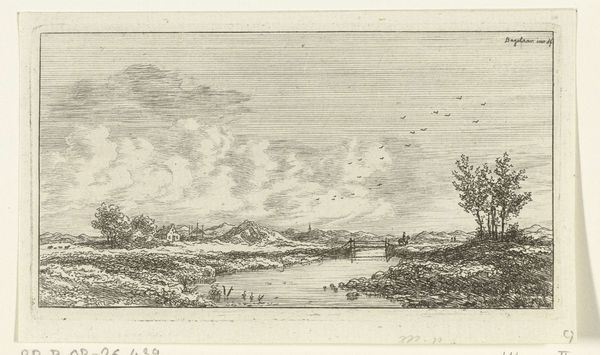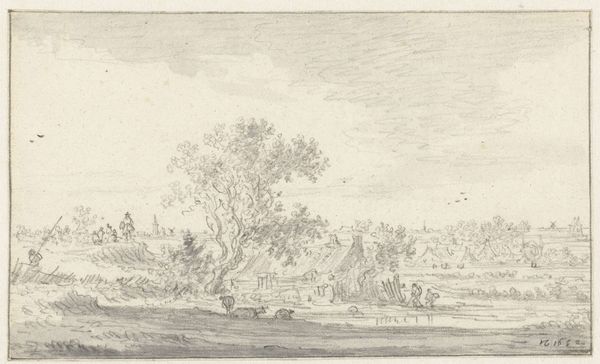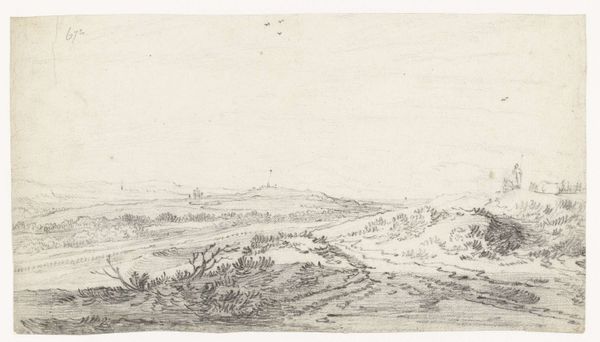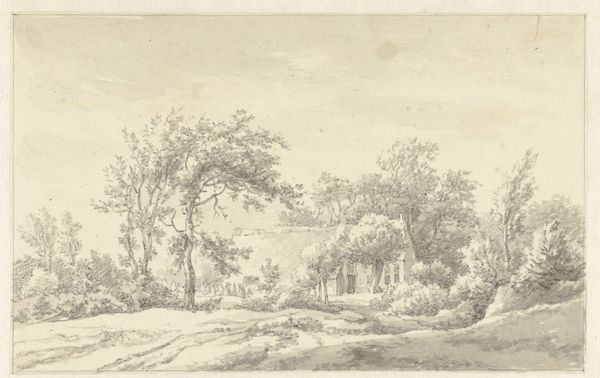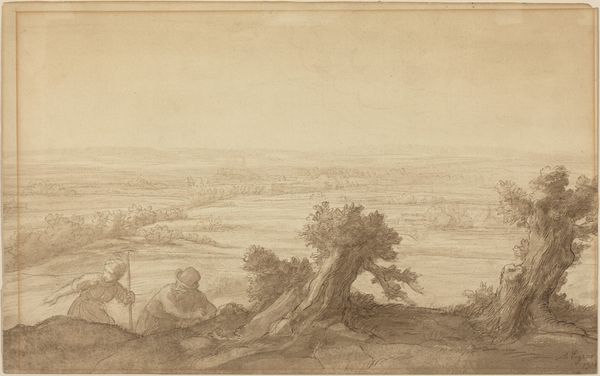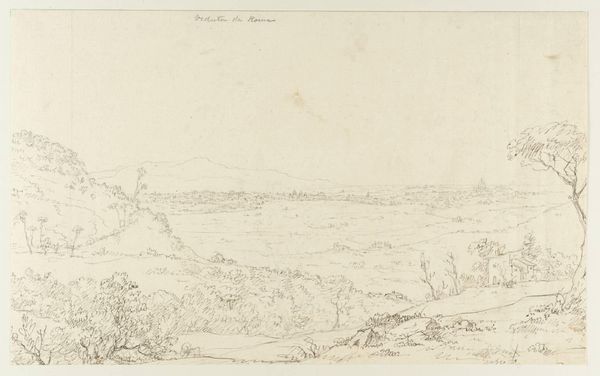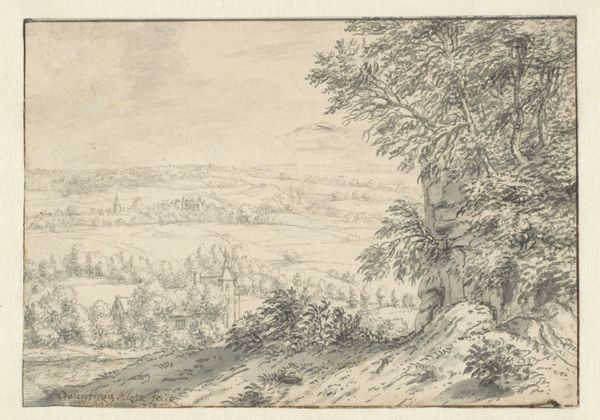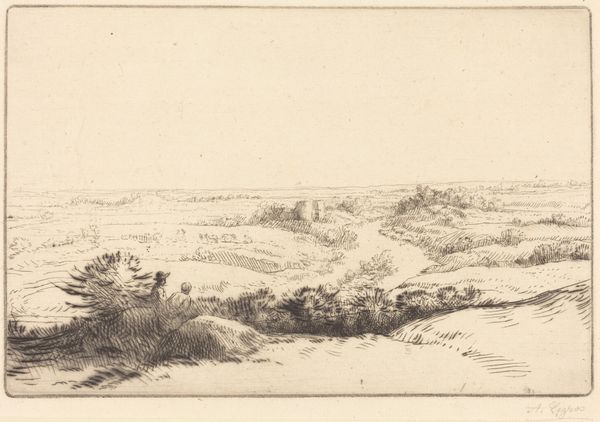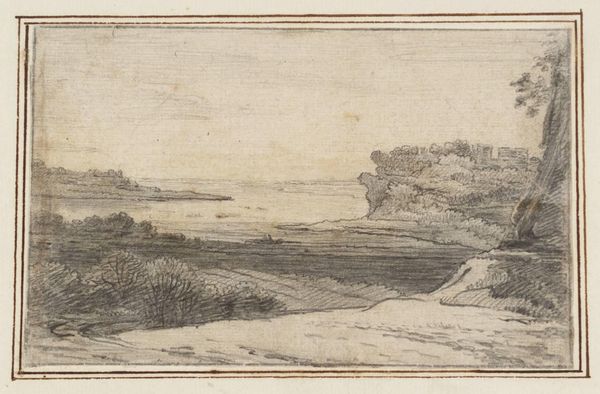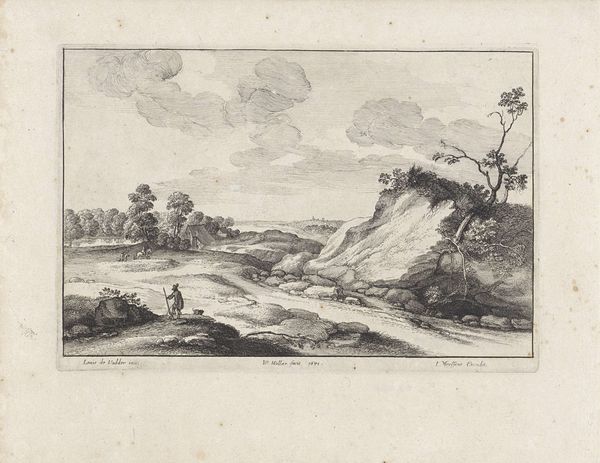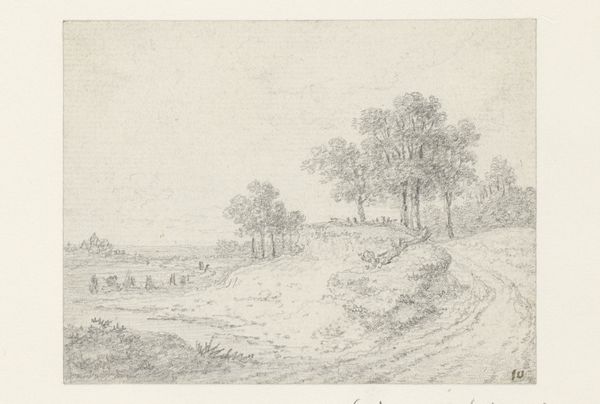
Dimensions: height 163 mm, width 295 mm
Copyright: Rijks Museum: Open Domain
Editor: This is "Uitgestrekt landschap met landweg," or "Extensive Landscape with Country Road," a pencil drawing made by Jacob Cats sometime between 1751 and 1799. It's currently held at the Rijksmuseum. The drawing has a delicate quality to it, like a fleeting observation of the countryside. What can you tell me about this piece? Curator: This landscape offers us a glimpse into the burgeoning Romantic movement. Notice the emphasis on nature's grandeur and the individual's small place within it. What's particularly interesting is the artist's choice of medium: pencil. Why do you think Cats opted for a drawing rather than a painting? Editor: Perhaps because a pencil sketch allowed him to quickly capture the scene, reflecting that fleeting moment I mentioned? It feels more immediate. Curator: Precisely. Drawings like these gained popularity as they democratized art. Painting was associated with the wealthy elite. Consider, too, how the "country road" signifies both literal and figurative journeys. What political and social changes might influence an artist to take a personal interest in landscape? Editor: Maybe it was the growing urbanization of the Netherlands. People might long for the countryside when surrounded by city life? Or perhaps increased travel created an appreciation for national identity that’s closely connected to seeing it portrayed and represented? Curator: Good points. The rise of a merchant class also impacted artistic patronage. Landscapes catered to a broader audience beyond the aristocracy, influencing the art market and defining art as accessible to many, not a selected few. It changed what was being collected, as people took pride in landscapes from home. Editor: That’s really fascinating, considering how artworks are used in creating social identities. Curator: Indeed. This modest pencil drawing reveals profound shifts in art’s function and social role. Editor: Thanks! I’ll definitely think about this piece differently now, looking at art as an artifact and symptom of socioeconomic phenomena!
Comments
No comments
Be the first to comment and join the conversation on the ultimate creative platform.
